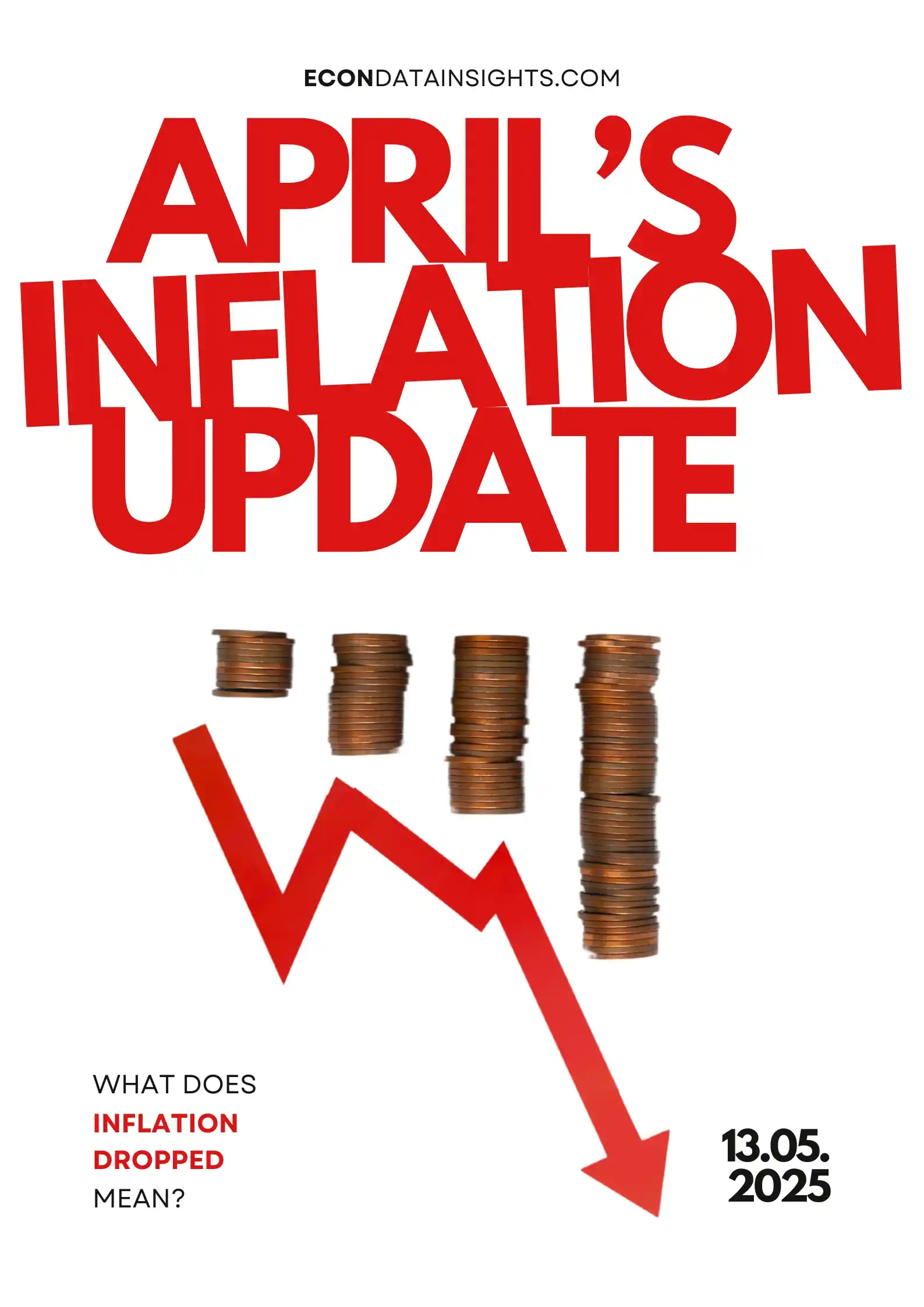India’s inflation metrics for April 2025 offer a glimmer of hope to households long burdened by rising costs. The Reserve Bank of India (RBI) released data indicating a cooling in retail inflation. Although prices have not dropped, the rate at which they are rising has slowed—akin to a car that’s still accelerating but at a gentler pace. This article unpacks what that means for consumers, the economy, and future financial planning.
🧾 What Happened?
The RBI reported that India’s Consumer Price Index (CPI)-based inflation eased to 4.5% in April 2025, down from 4.9% in March and a high of 5.7% earlier in January. The CPI tracks the price movement of a basket of goods and services including food, clothing, housing, fuel, and transportation.
This softening is significant because the RBI’s comfort zone for inflation is between 2% and 6%, with 4% being the ideal target. A CPI closer to 4% means that inflation is within manageable levels, allowing the central bank more flexibility in monetary policy decisions.
📉 What Does “Inflation Dropped” Mean?
To clarify, a drop in inflation does not imply that prices are falling—only that the pace at which they’re increasing has decelerated. For example, if tomatoes were ₹100/kg last month and increased to ₹105 this month instead of ₹110, the inflation rate has dropped, even though prices are still higher.
This slowing inflation is akin to applying the brakes on a heating system. The temperature (prices) is still warm, but it’s no longer climbing rapidly. For consumers, this can translate into:
- Slower rise in grocery bills
- Reduced fuel cost volatility
- Some stability in school fees, utility rates, and transportation fares
This also helps people plan better—especially those on fixed incomes or tight budgets.
🍚 What Caused the Decline?
Several key drivers contributed to this cooling of inflation:
1. Stability in Food Prices
Food constitutes around 45% of the CPI basket, making it a dominant factor. In April 2025, prices of vegetables, cereals, and pulses stabilized, aided by:
- A better-than-expected rabi harvest, which increased supply
- Reduced transportation bottlenecks, lowering logistics costs
- Government interventions like buffer stock releases and export controls on staples like onions and wheat
2. Tame Global Crude Oil Prices
India imports over 80% of its crude oil. Fortunately, international crude oil prices hovered around USD 78–USD 82 per barrel in April, compared to spikes above USD 90 earlier this year. This kept:
- Petrol and diesel prices relatively flat
- Input costs for transportation and manufacturing in check
3. Improved Supply Chains
Post-pandemic reforms in logistics and digital tracking of inventories have made supply chains more resilient. The e-way bill generation increased by 8% YoY, suggesting smoother movement of goods and lower chances of local shortages driving up prices.
💡 Why Should You Care?
1. Lower Inflation = More Disposable Income
Even a 0.5% drop in inflation means more money stays in your wallet. With food and fuel prices stabilizing, households may find it easier to manage their monthly budgets.
2. Potential RBI Rate Cuts
If inflation remains subdued, the RBI could cut the repo rate, currently at 6.5%. A reduction would result in:
- Cheaper home, car, and personal loans
- Lower EMIs
- Boost in consumer spending and investment
This can have a cascading effect, encouraging demand and reviving industrial growth, especially in interest-sensitive sectors like real estate and automobiles.
3. Better Investment Climate
Stable inflation attracts foreign investment as it signals economic predictability. FDI inflows already showed a 3.2% uptick in Q1 2025, and a favorable inflation outlook could accelerate this further.
🧠 The Bigger Picture
The easing of inflation reflects macro-level improvements in fiscal and monetary coordination. Here’s what it tells us:
- Monetary policy is working: RBI’s cautious stance and earlier rate hikes are bearing fruit.
- Government supply-side actions—like warehousing, MSP support, and export restrictions—have been effective.
- Global headwinds are being managed: Despite geopolitical tensions and shipping route disruptions, India’s import and logistics systems held firm.
Think of the economy like a high-performance engine. When inflation runs hot, it’s like overheating—requiring the central bank (the mechanic) to throttle down. April’s data suggests the engine is now operating within safe parameters, ready to rev up again.
📌 Bottom Line
April’s dip in inflation is not just a statistical milestone—it holds real-world significance. For citizens, it offers breathing room in household finances. For investors, it presents a more predictable economic environment. For policymakers, it opens up the toolbox for pro-growth strategies.
If the trend continues, the rest of 2025 could usher in lower loan rates, higher consumer confidence, and more robust job creation. In short, the economy is showing signs of healthy balance—and your wallet might feel a little heavier for it.
📊 Quick Recap: April 2025 CPI Inflation Data
| Indicator | April 2025 | March 2025 | Jan 2025 |
|---|---|---|---|
| CPI Inflation Rate | 4.5% | 4.9% | 5.7% |
| Food Inflation Rate | 3.1% | 4.0% | 5.3% |
| Crude Oil (Avg Brent) | $80/bbl | $85/bbl | $91/bbl |
| Repo Rate (RBI) | 6.5% | 6.5% | 6.5% |
Stay informed and stay prepared—because macroeconomic changes always ripple down to individual choices.

